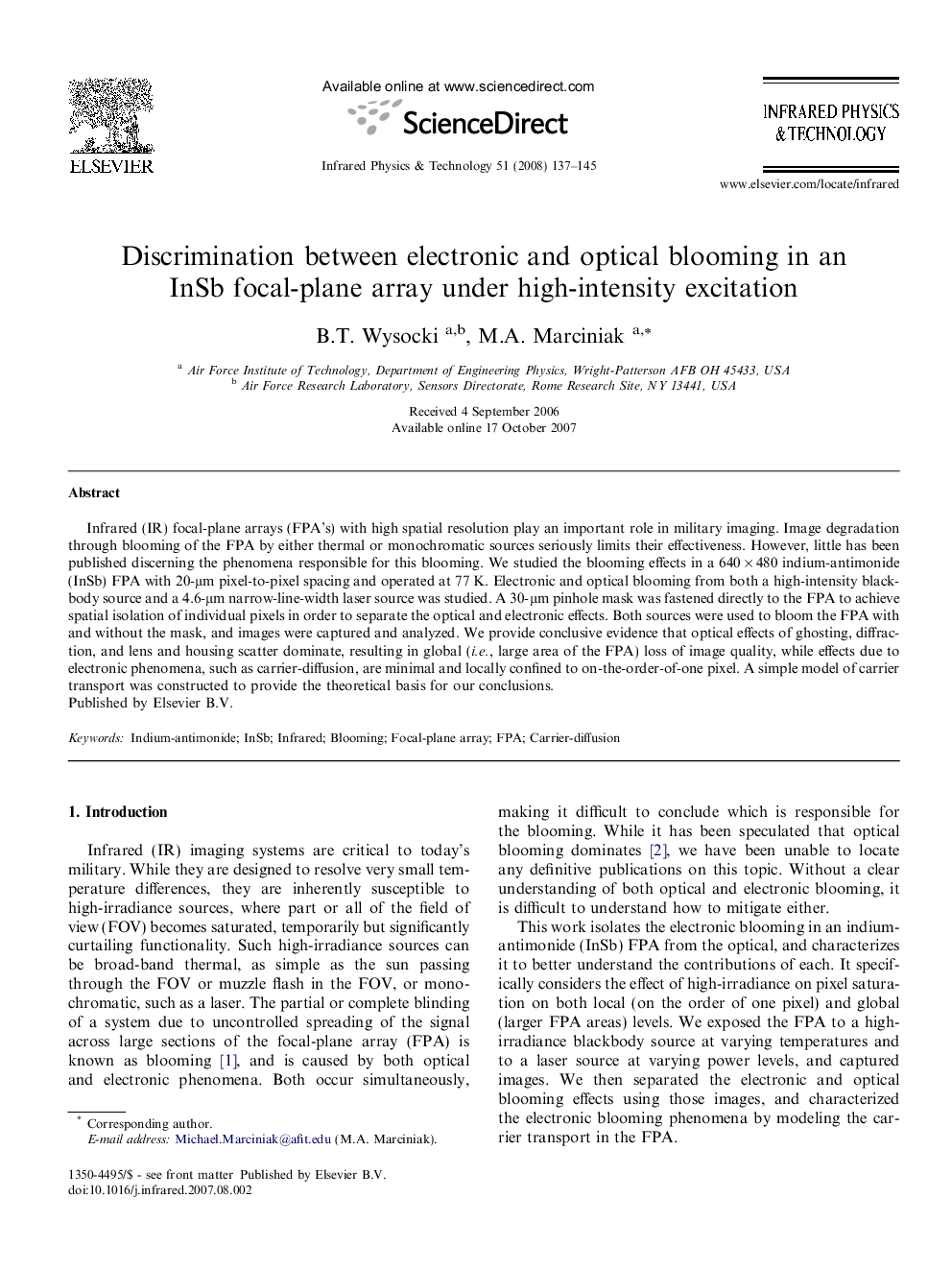| Article ID | Journal | Published Year | Pages | File Type |
|---|---|---|---|---|
| 1785154 | Infrared Physics & Technology | 2008 | 9 Pages |
Infrared (IR) focal-plane arrays (FPA’s) with high spatial resolution play an important role in military imaging. Image degradation through blooming of the FPA by either thermal or monochromatic sources seriously limits their effectiveness. However, little has been published discerning the phenomena responsible for this blooming. We studied the blooming effects in a 640 × 480 indium-antimonide (InSb) FPA with 20-μm pixel-to-pixel spacing and operated at 77 K. Electronic and optical blooming from both a high-intensity blackbody source and a 4.6-μm narrow-line-width laser source was studied. A 30-μm pinhole mask was fastened directly to the FPA to achieve spatial isolation of individual pixels in order to separate the optical and electronic effects. Both sources were used to bloom the FPA with and without the mask, and images were captured and analyzed. We provide conclusive evidence that optical effects of ghosting, diffraction, and lens and housing scatter dominate, resulting in global (i.e., large area of the FPA) loss of image quality, while effects due to electronic phenomena, such as carrier-diffusion, are minimal and locally confined to on-the-order-of-one pixel. A simple model of carrier transport was constructed to provide the theoretical basis for our conclusions.
